Home » Volcanoes » Volcanic Lightning
Photos of Lightning in the Redoubt Volcano Ash Cloud
Images and discussion submitted by Bretwood Higman of GroundTruthAlaska.org
These photos of lightning in a volcanic ash cloud from Redoubt Volcano were taken by Bretwood Higman. The camera was mounted under the yurt where he lives in Seldovia, Alaska, and was set to automatically take a 30 second photo every two minutes. Seldovia is 80 miles from the volcano, on the far side of Cook Inlet. Two eruptions are captured in the photos, the first at 11:20 pm on March 27, and the second two hours later. The camera, a Canon Digital Rebel XTi with a Canon 70-200mm L lens, was only barely able to resolve the eruption cloud illuminated by the lightning, which is why the images appear noisy.
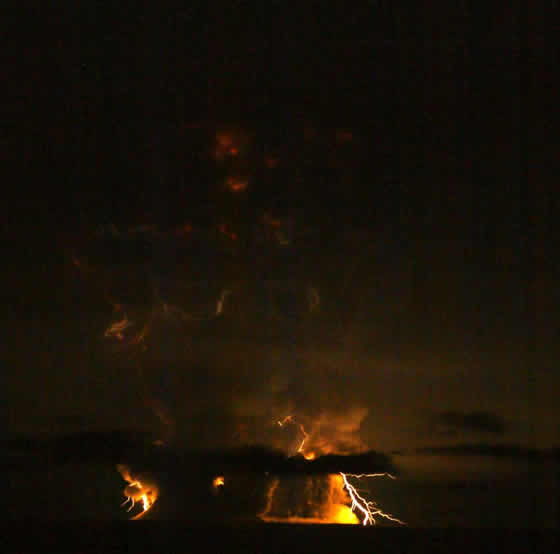
Redoubt Volcano lightning: Lightning in the ash cloud from the 11:20 PM March 27 eruption at 11:26 PM. Photo by Bretwood Higman.
For both of these eruptions, the lightning did not begin until several minutes after the explosion began. How lightning forms in general is still debated among scientists, and volcanic lightning is even less well understood. What is mostly agreed upon is that the process starts when particles separate, either after a collision or when a larger particle breaks in two. Then some difference in the aerodynamics of these particles causes the positively charged particles to be systematically separated from the negatively charged particles. Lightning is the electrical flow that results when this charge separation becomes too great for air to resist the flow of electricity. Some of the lighting strokes in these photos are at least 2 miles long, so the separation of charged particles must occur on this scale.
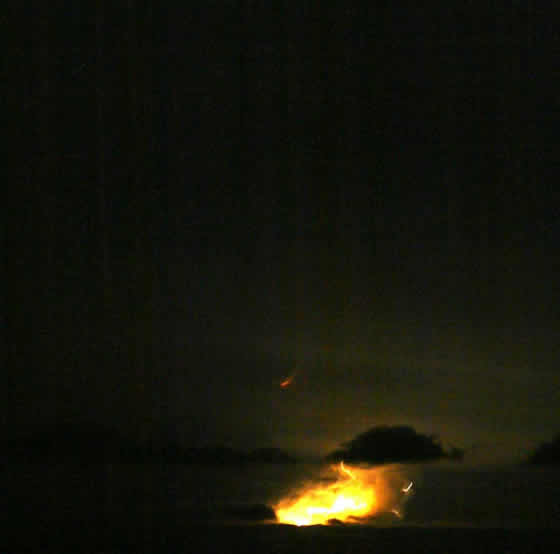
Volcanic lightning: Lightning in the ash cloud from the 11:20 PM March 27 eruption at 11:28 PM. Photo by Bretwood Higman.
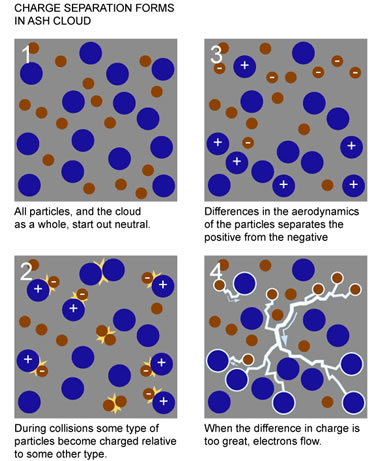
Idealized sequence of events that leads to lightning.
Related: Redoubt Volcano Information
Lightning Science
What causes lightning in a volcanic ash cloud? Here is an idealized sequence of events that leads to lightning:
- Starting state (particles might have already been charged by some previous process).
- Collisions lead to charge separation. For this to happen there has to be some difference in the electrical properties of the particles in the collisions.
- Some process, such as aerodynamic sorting, segregates the positively and negatively charged particles. This means that there are sections of the cloud that are more negative or positive than other sections.
- When the charge separation becomes too great, electricity will flow between the positive and negative regions of the cloud, forming lightning and neutralizing the charge separation.
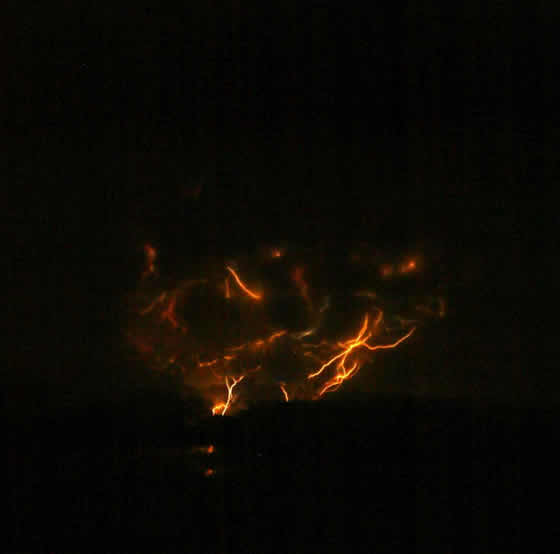
Ash cloud lightning: Lightning in the ash cloud from the 11:20 PM March 27 eruption at 11:32 PM. Photo by Bretwood Higman.
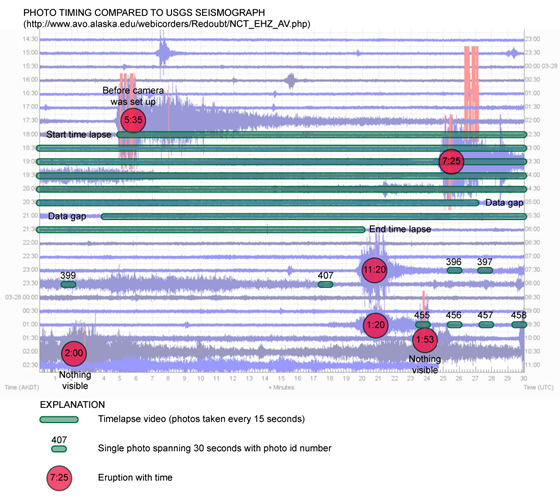
Seismogram: Timing of the eruptions relative to these photos. Image by Alaska Volcano Observatory.
| More Volcanoes |
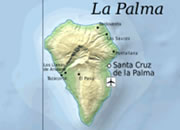 |
Where Are the Canary Islands? |
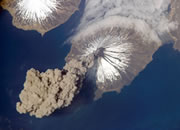 |
Mount Cleveland |
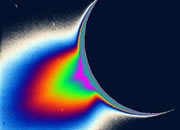 |
Solar System Volcanoes |
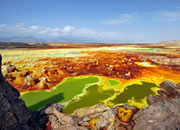 |
Dallol Volcano |
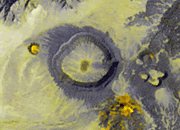 |
What is a Maar? |
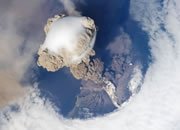 |
Spectacular Eruption Photos |
 |
Stromboli Volcano |
 |
Mount St. Helens |

Find Other Topics on Geology.com:

|

| ||

|

| ||

|

| ||

|

|
